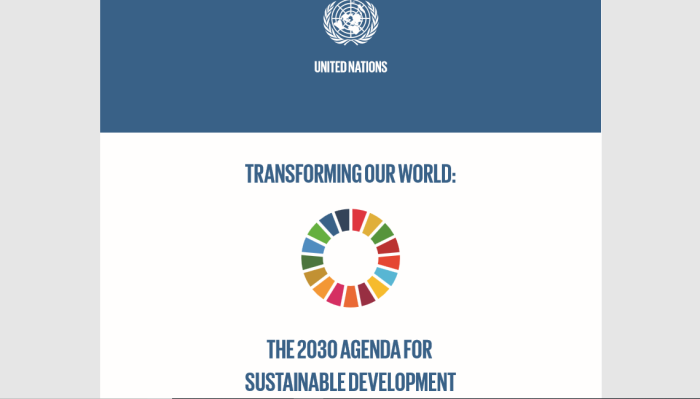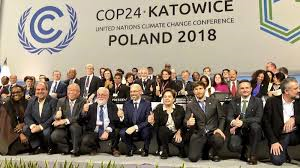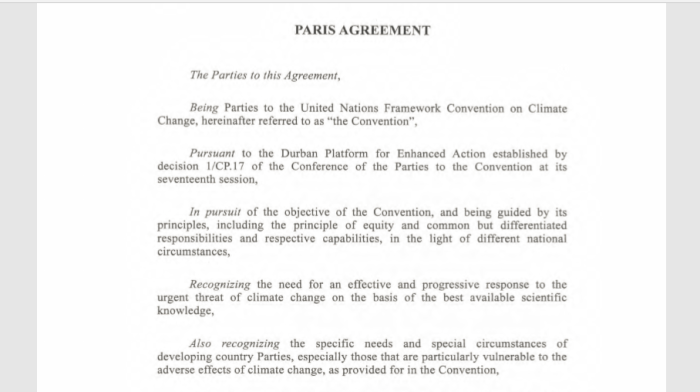

(Garnett Genuis defends the Paris Accord)
(A nice critique of Paris Accord)
1. Debunking The Climate Change Scam
(a) https://canucklaw.ca/ccs-1-overview-major-lies-of-the-climate-change-scam
(b) https://canucklaw.ca/ccs-2-the-paris-accord-a-giant-wealth-transfer-scheme/
2. Important Links
(1) http://www.parl.ca/DocumentViewer/en/42-1/bill/C-97/first-reading#enH5814
(2) https://laws-lois.justice.gc.ca/eng/acts/G-11.55/
(3) https://www.fsmgov.org/paris.pdf
3. Quotes From Bill C-97
DIVISION 4
.
Payments
.
Climate Action Support
.
Payment in Relation to Infrastructure
.
Maximum payment of $2,200,000,000
.
130 Despite section 161 of the Keeping Canada’s Economy and Jobs Growing Act, as amended by section 233 of the Economic Action Plan 2013 Act, No. 1, there may be paid out of the Consolidated Revenue Fund, on the requisition of the Minister of Infrastructure and Communities or the Minister of State (Indigenous Services), in accordance with terms and conditions approved by the Treasury Board, in addition to the sum referred to in that section 161, a sum not exceeding $2,200,000,000 to provinces, territories, municipalities, municipal associations, provincial, territorial and municipal entities and First Nations for the purpose of municipal, regional and First Nations infrastructure.
.
Federation of Canadian Municipalities
.
Maximum payment of $950,000,000
.
131 (1) There may be paid out of the Consolidated Revenue Fund, on the requisition of the Minister of Natural Resources, in accordance with the terms and conditions provided for in the agreement referred to in subsection (2), a sum not exceeding $950,000,000 to the Federation of Canadian Municipalities for the purpose of providing funding to the Green Municipal Fund.
.
Maximum payment of $60,000,000
.
(3) There may be paid out of the Consolidated Revenue Fund, on the requisition of the Minister of Infrastructure and Communities, in accordance with the terms and conditions provided for in the agreement referred to in subsection (4), a sum not exceeding $60,000,000 to the Federation of Canadian Municipalities for the purpose of providing funding to the Asset Management Fund.
.
Shock Trauma Air Rescue Service
.
Maximum payment of $65,000,000
.
132 (1) There may be paid out of the Consolidated Revenue Fund, on the requisition of the Minister of Public Safety and Emergency Preparedness, in accordance with the terms and conditions provided for in the agreement referred to in subsection (2), a sum not exceeding $65,000,000 to the Shock Trauma Air Rescue Service for the acquisition of new emergency ambulance helicopters.
Okay, let’s tally this up
| Area Of Spending | Amount |
|---|---|
| Infrastructure | $2,200,000,000 |
| Municipalities | $950,000,000 |
| Green Municipal Fund | $60,000,000 |
| Air Rescue Service | $65,000,000 |
| Total Spending | $3,275,000,000 |
This “price on pollution” will result in $3.275B being spent, and this is just for now. There is nothing to indicate that spending won’t go up.
Bill C-97 references the “Greenhouse Gas Pollution Pricing Act” (a.k.a. Carbon tax act). Here it is, and it is well worth a read. The more interesting sections are in Division 6, which have to do with enforcement.
Chilling, considering this is bogus pseudo-science.
Probably the most irritating part of Bill C-97 is that it is an omnibus bill. This means that it is a mismatch of many unrelated areas of law, being rammed through Parliament.
When in opposition, Liberals claimed to be against omnibus bills. Different story when they are in power.
4. What Is This?
DIVISION 8, SUBDIVISION B
.
R.S., c. E-4
Electricity and Gas Inspection Act
162 The Electricity and Gas Inspection Act is amended by adding the following after section 28:
Ministerial Regulations
.
28.1 (1) Despite anything in the Weights and Measures Act, the Minister may make regulations prescribing units of measurement for electricity and gas sales in addition to the units specified in section 3.
.
Expiry
(2) A regulation made under subsection (1) ceases to have effect on the earliest of
(a) the day on which a regulation made under paragraph 28(1)(b) that has the same effect as the regulation comes into force,
(b) the third anniversary of the day on which the regulation made under subsection (1) comes into force, or
(c) the day on which it is repealed.
Is this to mean the government will be controlling how energy will be sold and in what amounts?
5. Greenhouse Gases Pollution Pricing Act
DIVISION 6
.
Administration and Enforcement
SUBDIVISION A
Payments
Marginal note:
Person resident in Canada
84 For the purposes of this Division, a person is deemed to be resident in Canada at any time
(a) in the case of a corporation, if the corporation is incorporated or continued in Canada and not continued elsewhere;
(b) in the case of a partnership, a joint venture, an unincorporated society, a club, an association or an organization, or a branch thereof, if the member or participant, or a majority of the members or participants, having management and control thereof is or are resident in Canada at that time;
(c) in the case of a labour union, if it is carrying on activities as such in Canada and has a local union or branch in Canada at that time; or
(d) in the case of an individual, if the individual is deemed under any of paragraphs 250(1)(b) to (f) of the Income Tax Act to be resident in Canada at that time.
Is there anyone who “doesn’t” make the list? Individuals, partnerships, labour unions and corporations are all included in this law.
Large payments
86 Every person that is required under this Part to pay an amount to the Receiver General must, if the amount is $50,000 or more, make the payment to the account of the Receiver General at
(a) a bank;
(b) a credit union;
(c) a corporation authorized under the laws of Canada or a province to carry on the business of offering its services as a trustee to the public; or
(d) a corporation that is authorized under the laws of Canada or a province to accept deposits from the public and that carries on the business of lending money on the security of real property or immovables or investing in indebtedness on the security of mortgages on real property or hypothecs on immovables.
Wow. So the government seems to “expect” that people will be writing very large cheques to cover these carbon costs. In fact, if your bill is over $50,000 … as if this is to be normal. Guess the fears of companies being put out of business is legitimate.
Also, here are portions of the “penalties” provisions.
6. Punishment & Enforcement
Punishment
(2) Every person that commits an offence under subsection (1) is guilty of an offence punishable on summary conviction and, in addition to any penalty otherwise provided, is liable to
(a) a fine of not less than 50%, and not more than 200%, of the amount payable that was sought to be evaded, or of the rebate or other payment sought, or, if the amount that was sought to be evaded cannot be ascertained, a fine of not less than $2,000 and not more than $40,000;
(b) imprisonment for a term not exceeding two years; or
(c) both a fine referred to in paragraph (a) and imprisonment for a term not exceeding two years.
.
Marginal note:
Prosecution on indictment
(3) Every person that is charged with an offence described in subsection (1) may, at the election of the Attorney General of Canada, be prosecuted on indictment and, if convicted, is, in addition to any penalty otherwise provided, liable to
(a) a fine of not less than 100%, and not more than 200%, of the amount payable that was sought to be evaded, or of the rebate or other payment sought, or, if the amount that was sought to be evaded cannot be ascertained, a fine of not less than $5,000 and not more than $100,000;
(b) imprisonment for a term not exceeding five years; or
(c) both a fine referred to in paragraph (a) and imprisonment for a term not exceeding five years.
Marginal note:
Penalty on conviction
(4) A person that is convicted of an offence under this section is not liable to pay a penalty imposed under this Part for the same evasion or attempt unless a notice of assessment for that penalty was issued before the information or complaint giving rise to the conviction was laid or made.
.
Marginal note:
Stay of appeal
(5) If, in any appeal under this Part, substantially the same facts are at issue as those that are at issue in a prosecution under this section, the Minister may file a stay of proceedings with the Tax Court of Canada and, upon that filing, the proceedings before the Tax Court of Canada are stayed pending a final determination of the outcome of the prosecution.
.
Marginal note:
Offence — confidential information
134 (1) A person is guilty of an offence and liable on summary conviction to a fine not exceeding $5,000 or to imprisonment for a term not exceeding 12 months, or to both, if that person
(a) contravenes subsection 107(2); or
(b) knowingly contravenes an order made under subsection 107(12).
.
Marginal note:
Offence — confidential information
(2) Every person to whom confidential information has been provided for a particular purpose under subsection 107(6) and that for any other purpose knowingly uses, provides to any person, allows the provision to any person of, or allows any person access to, that information is guilty of an offence and liable on summary conviction to a fine not exceeding $5,000 or to imprisonment for a term not exceeding 12 months, or to both.
Yes, you can get up to 5 years in prison for not playing ball with the Carbon tax collectors. Considering that Bill C-75 (among other things) made terrorism offences hybrid offences (prosecutors can charge summarily), Carbon taxes are an odd thing to focus on.




